
-
 US stocks push higher while gold, silver notch fresh records
US stocks push higher while gold, silver notch fresh records
-
Deadly clashes in Aleppo as Turkey urges Kurds not to be obstacle to Syria's stability

-
 Is the United States after Venezuela's oil?
Is the United States after Venezuela's oil?
-
Trump admin halts US offshore wind projects citing 'national security'
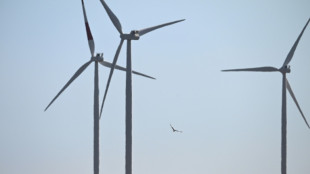
-
 Right wing urges boycott of iconic Brazilian flip-flops
Right wing urges boycott of iconic Brazilian flip-flops
-
From misfits to MAGA: Nicki Minaj's political whiplash

-
 Foster grabs South Africa winner against Angola in AFCON
Foster grabs South Africa winner against Angola in AFCON
-
Russia pledges 'full support' for Venezuela against US 'hostilities'

-
 Spotify says piracy activists hacked its music catalogue
Spotify says piracy activists hacked its music catalogue
-
Winter Olympics organisers resolve snow problem at ski site
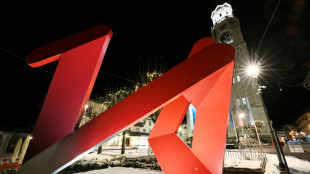
-
 Fuming Denmark summons US ambassador over Greenland envoy
Fuming Denmark summons US ambassador over Greenland envoy
-
UK's street artist Banksy unveils latest mural in London
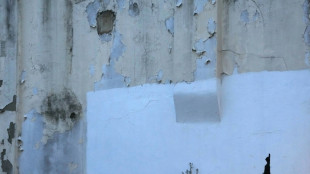
-
 Rugby players lose order challenge in brain injury claim
Rugby players lose order challenge in brain injury claim
-
UK singer Chris Rea dies at 74, days before Christmas
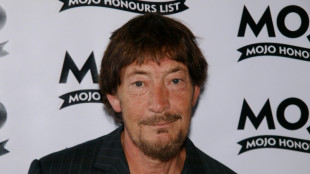
-
 Last of kidnapped Nigerian pupils handed over, government says
Last of kidnapped Nigerian pupils handed over, government says
-
Zambia strike late to hold Mali in AFCON opener

-
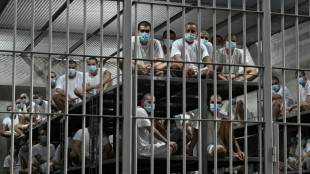 Outcry follows CBS pulling program on prison key to Trump deportations
Outcry follows CBS pulling program on prison key to Trump deportations
-
Sri Lanka cyclone caused $4.1 bn damage: World Bank

-
 Billionaire Ellison offers personal guarantee for son's bid for Warner Bros
Billionaire Ellison offers personal guarantee for son's bid for Warner Bros
-
Tech stocks lead Wall Street higher, gold hits fresh record

-
 Telefonica to shed around 5,500 jobs in Spain
Telefonica to shed around 5,500 jobs in Spain
-
McCullum wants to stay as England coach despite Ashes drubbing

-
 EU slams China dairy duties as 'unjustified'
EU slams China dairy duties as 'unjustified'
-
Italy fines Apple nearly 100 mn euros over app privacy feature
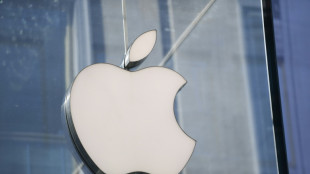
-
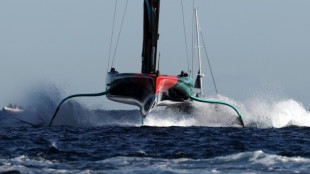 America's Cup switches to two-year cycle
America's Cup switches to two-year cycle
-
Jesus could start for Arsenal in League Cup, says Arteta

-
 EU to probe Czech aid for two nuclear units
EU to probe Czech aid for two nuclear units
-
Strauss says sacking Stokes and McCullum will not solve England's Ashes woes

-
 Noel takes narrow lead after Alta Badia slalom first run
Noel takes narrow lead after Alta Badia slalom first run
-
Stocks diverge as rate hopes rise, AI fears ease

-
 Man City players face Christmas weigh-in as Guardiola issues 'fatty' warning
Man City players face Christmas weigh-in as Guardiola issues 'fatty' warning
-
German Christmas markets hit by flood of fake news
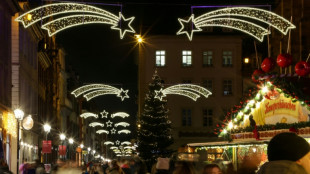
-
 Liverpool fear Isak has broken leg: reports
Liverpool fear Isak has broken leg: reports
-
West Indies captain says he 'let the team down' in New Zealand Tests
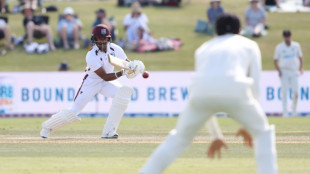
-
 Thailand says Cambodia agrees to border talks after ASEAN meet
Thailand says Cambodia agrees to border talks after ASEAN meet
-
Alleged Bondi shooters conducted 'tactical' training in countryside, Australian police say
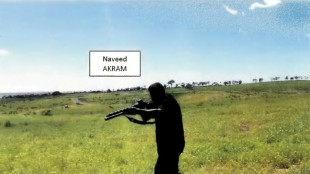
-
 Swiss court to hear landmark climate case against cement giant
Swiss court to hear landmark climate case against cement giant
-
Knicks' Brunson scores 47, Bulls edge Hawks epic

-
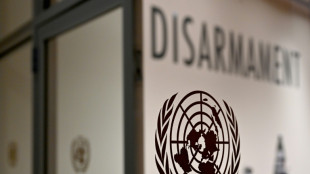 Global nuclear arms control under pressure in 2026
Global nuclear arms control under pressure in 2026
-
Asian markets rally with Wall St as rate hopes rise, AI fears ease

-
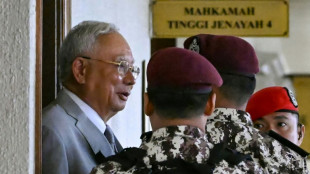 Jailed Malaysian ex-PM Najib loses bid for house arrest
Jailed Malaysian ex-PM Najib loses bid for house arrest
-
Banned film exposes Hong Kong's censorship trend, director says

-
 Duffy, Patel force West Indies collapse as NZ close in on Test series win
Duffy, Patel force West Indies collapse as NZ close in on Test series win
-
Australian state pushes tough gun laws, 'terror symbols' ban after shooting
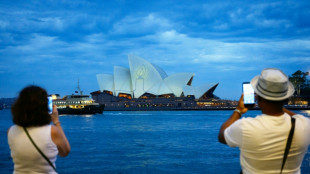
-
 A night out on the town during Nigeria's 'Detty December'
A night out on the town during Nigeria's 'Detty December'
-
US in 'pursuit' of third oil tanker in Caribbean: official
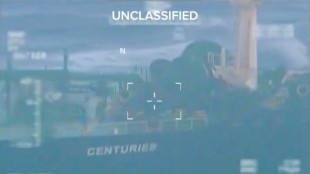
-
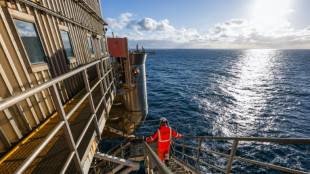 CO2 soon to be buried under North Sea oil platform
CO2 soon to be buried under North Sea oil platform
-
Steelers edge Lions as Bears, 49ers reach playoffs

-
 India's Bollywood counts costs as star fees squeeze profits
India's Bollywood counts costs as star fees squeeze profits
-
McCullum admits errors in Ashes preparations as England look to salvage pride


Webb telescope promises new age of the stars
The James Webb Space Telescope lit up 2022 with dazzling images of the early universe after the Big Bang, heralding a new era of astronomy and untold revelations about the cosmos in years to come.
The most powerful observatory sent into space succeeds the Hubble telescope, which is still operating, and began transmitting its first cosmic images in July.
"It essentially behaves better than expected in almost every area," said Massimo Stiavelli, head of the Webb mission office at the Space Telescope Science Institute, in Baltimore.
Already scientists say the Webb telescope, now orbiting the sun at a million miles (1.6 million kilometres) from Earth, should last 20 years, twice its guaranteed lifetime.
"The instruments are more efficient, the optics are sharper and more stable. We have more fuel and we use less fuel," said Stiavelli.
Stability is vital for the clarity of the images.
"Our requirement was similar to that of Hubble, in terms of pointing accuracy. And we ended up being seven times better," the mission office chief added.
Public appetite for the discoveries has been fed by the colouring of the telescope's images.
Light from the most distant galaxies has been stretched from the visible spectrum, viewable by the naked eye, to infrared -- which Webb is equipped to observe with unprecedented resolution.
This enables the telescope to detect the faintest glimmers from the distant universe at an unprecedented resolution, to see through the veil of dust that masks the emergence of stars in a nebula and to analyse the atmosphere of exoplanets, which orbit stars outside our solar system.
- 18 petals -
"The first year (of observation) is a way to test out the tool for the small rocky planets in the habitable zone that could potentially be like Earth," said Lisa Kaltenegger, associate professor in Astronomy at Cornell University.
"And the tests are beautiful. They're spectacular."
Webb blasted off aboard an Ariane 5 rocket at the end of 2021 crowning a 30-year project at the US space agency NASA.
It took 10,000 people and 10 billion dollars to put the 6.2-tonne observatory into space.
En route to final orbit, Webb deployed a five-layer sunshield the size of a tennis court followed by a 6.5 metre primary mirror made up of 18 hexagonal, gold-coated segments or petals.
Once calibrated to less than a millionth of a metre, the 18 petals began to collect the light pulsing stars.
Last July 12, the first images underlined Webb's capabilities unveiling thousands of galaxies, some dating back close to the birth of the Universe, and a star nursery in the Carina nebula.
Jupiter has been captured in incredible detail which is expected to help understand the workings of the giant gas planet.
- 'Too many' galaxies -
The blue, orange and grey tones of the images from the "Pillars of Creation", giant dust columns where stars are born, proved captivating.
Scientists saw the revelations as a way of rethinking their models of star formation.
Researchers using the new observatory have found the furthest galaxies ever observed, one of which existed just 350 millions years after the Big Bang some 13.8 billion years ago.
The galaxies appear with extreme luminosity and may have started forming 100 million years earlier than theories predicted.
"In the distant Universe, we have an excess of galaxies compared to models," David Elbaz, scientific director for astrophysics at France's Alternative Energies and Atomic Energy Commission, told AFP.
Another surprise has been that where Hubble essentially observed irregular shaped galaxies, the precision of the Webb telescope produces magnificent spiral galaxies similar to our own.
This has led to musings over a potential universal model which could be one of the keys to star formation.
Webb also opened up a profusion of clusters of millions of stars leading, which could be the potential missing link between the first stars and the first galaxies.
In the field of exoplanets, Webb honed in on a faraway gas giant called WASP-96 b, which was discovered in 2014.
Nearly 1,150 light-years from Earth, WASP-96 b is about half the mass of Jupiter and zips around its star in just 3.4 days
Webb provided the first confirmation that carbon dioxide is present in the atmosphere of Wasp 39-b.
But for Stiavelli, "Some of the big things either haven't been observed yet, or haven't been revealed yet."
Ch.Kahalev--AMWN


